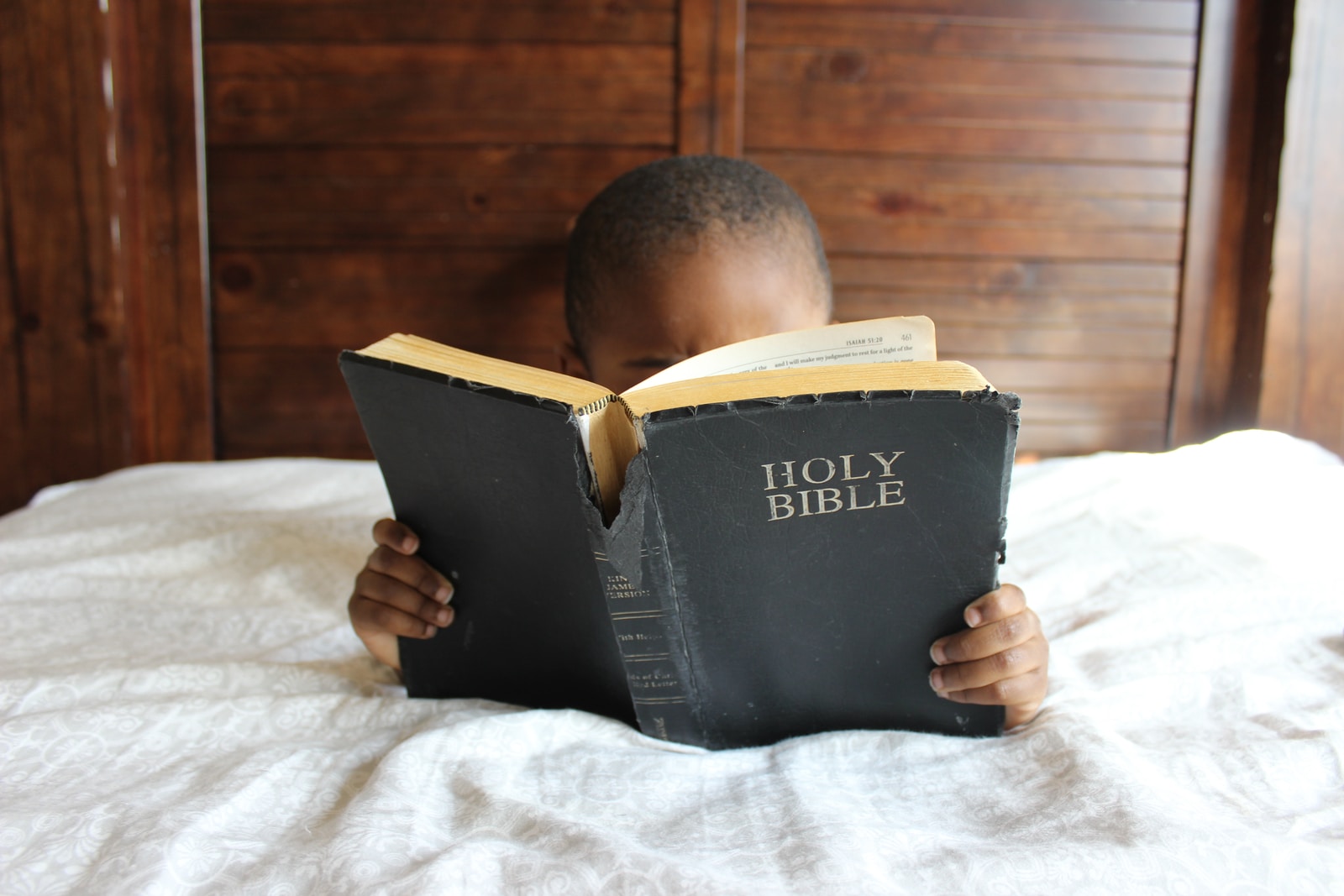Kids’ Bibles have a lasting impact on the faith of their young readers. A children’s Bible may be a child’s first introduction to many Bible stories. And first impressions matter. A well-written, inclusive, and theologically sound Bible for children can bring the Bible to life vibrantly and powerfully. By contrast, a less strong Bible for children can leave kids with a misguided and even harmful picture of God and how they can live into their God-given callings. Here’s some advice and recommendations to help you choose the best children’s Bible for the young readers in your life.
What to look for in a children’s Bible
When you’re choosing a children’s Bible, here’s a checklist of three key factors to consider:
-
The stories themselves
Which Bible stories are included? Which important stories may not be included? How are the stories being told? Who is or are the protagonist(s)? In other words, who is centered in the story? There should be a wide variety of characters, male and female, from different backgrounds. Overall, research from the Fuller Youth Institute suggests that the more expansive the biblical witness—that is, the more we can tell the full story of God’s redemption of creation—the richer a young person’s spiritual life becomes.
-
The theological foundation
Is this Bible a theologically solid foundation for faith formation? Is it historically accurate? For our purposes, we ask, does it align with Reformed theology? A basic rule of thumb: Does this children’s Bible share the story of God’s redeeming work both in the past for God’s chosen people and in the present as an ongoing redemption still happening today? (If you are from another tradition, you may consider whether the Bible is consistent with your theological beliefs.)
-
The images and language that bring the stories to life
This isn’t just about whether you think the artwork is attractive and the stories are well-written (though they should be). Are there accurate representations of males and females? Are the images racially and ethnically diverse? Does the portrayal of Jesus reflect his Middle Eastern heritage? How are people with disabilities represented? Are people of all generations portrayed respectfully? Think, too, about how this kids Bible presents the character of God. What language is used to describe God? Look for portrayals of God as a loving, supportive parent, not removed or punitive. Is the language for God and God’s people inclusive? Make sure you also consider the reading level of the Bible, especially for very young children.
Check which stories a children’s Bible tells
Let’s expound upon some of the criteria just a little bit further. There are a wide range of stories and characters in the Bible that a children’s Bible might focus on, and perhaps even more importantly, many that might be overlooked. Within the stories that a kids’ Bible does tell, the meaning of the story can change depending on which characters take center stage.
For example, from Jacob’s perspective, Leah is an obstacle standing in the way of his life with Rachel, her younger sister. But from Leah’s perspective, her story is about finding purpose and comfort in service to God and motherhood in spite of Jacob’s unloving treatment toward her.
Overall, research from the Fuller Youth Institute suggests that the more expansive the biblical witness–that is, the more we can tell the full story of God’s redemption of creation–the richer a young person’s spiritual life becomes. So make sure to review the table of contents of a children’s Bible to see which stories are listed. The cover art may be deceptive, so don’t judge a book by its cover, as the saying goes.
It’s especially crucial to make note of how well women are represented. For young girls, having diverse biblical role models who are women is essential. And it’s equally important for young boys to see all the different ways that women play a role in God’s story.
Women show up in Scripture in so many distinct and important ways, from Esther, to Deborah, to Mary, and to Martha. And, just like men, the women in the Bible live into their God-given gifts and callings.
Unfortunately, many children’s Bibles tend to overlook the stories of women in the Bible or fall prey to stereotyped representations of women. Is Mary portrayed as a brave young woman who answers God’s call, or is she only included as Jesus’s mother and Joseph’s wife? Do empowered, strong women like Deborah, Esther, and Lydia make an appearance?
Consider the language that kids’ Bibles use
Check to see if this children’s Bible uses an expanded vocabulary of words for God. Is God always referred to as “He/Him”? Or does the Bible introduce biblical terms for God, such as Yahweh, and more contemporary language like “Holy One” or “Creator”?
How does this Bible speak about God’s people? Look for words that are inclusive, such as “humankind,” instead of excluding language like “mankind.”
Consider how the Bible speaks about people who have disabilities as well. Avoid children’s Bibles that have outdated language, such as “crippled” or “mute.” In general, seek out children’s Bibles that use person-first language (starting with who a person is and not their disability) when referring to people who have disabilities.
You’ll also want to make sure that the children’s Bible you choose is written at an age-appropriate level for the child or children who will be reading it. Older children (and even adults!) can still benefit from a well-written children’s Bible directed at younger readers, but a text intended for upper elementary or middle schoolers, such as an NIV or NRSV Bible with contextual information intended for young readers, may not be the right fit for a five-year-old.
Prioritize a children’s Bible with a solid theological foundation
The themes that a children’s Bible pulls out and chooses to highlight about the biblical narrative will help shape a child’s faith for years to come. Look for a kids’ Bible that captures the whole story at the heart of the Bible, not just enjoyable snippets of the story.
If the children’s Bible is a retelling of biblical stories, see if you can find out whether it’s based on a good translation (we recommend NRSV or NIV). You’ll also want to pay attention to the historical accuracy of the storytelling. Does this children’s Bible represent the original context for Bible stories in a way that young readers today can grasp?
Related reading: How to Read the Bible and Understand Scripture
Make sure you consider how children’s Bibles portray God, since early ideas about God can have such a lasting impact on a person’s faith. Does this Bible demonstrate the sovereignty of God in the story? What about God’s love, mercy, faithfulness, and grace? How well does this children’s Bible convey the teachings, divinity, and incredible grace and love of Jesus Christ? The best children’s Bibles bring the healing and hope of Jesus Christ into the whole biblical narrative, including the Old Testament. Are all of God’s people represented as made in God’s image?
Look for a Bible that is inclusive and hospitable in its theology. Is this Bible inviting young readers to pursue a gospel that embraces diversity of abilities, welcomes all different races and ethnicities, fully includes women, and honors the value and gifts of all generations? Try to find a children’s Bible that paints the vision of Revelation 7:9-10, of “a great multitude that no one could count, from every nation, from all tribes and peoples and languages, standing before the throne and before the Lamb.”
Related reading: The Practices of Biblical Equity-Based Hospitality
What to look for from the illustrations
Now turn to the images: are they inclusive, accurate, and hospitable?
Are Jesus and other characters portrayed as the Middle Easterners that they were, or are they represented as Northern Europeans? If there are diverse races/ethnicities shown, what are the power dynamics? For example, are darker-skinned people placed in servant roles or as villains? Are the protagonists “fair” and blond? These are racial stereotypes to avoid and are not historically accurate.
If people who have disabilities are represented in the images, are they shown with dignity? And are they painted in ways that are historically accurate? For instance, it wouldn’t be appropriate to show someone using a walker, but a cane would be accurate for the time.
Best Children’s Bibles in 2022
We reached out to parents and pastors to share their recommendations for the best children’s Bibles out there, with an eye toward diversity and representation. Our team reviewed their suggestions and other resources on this topic to come up with a few top children’s Bibles we recommend.
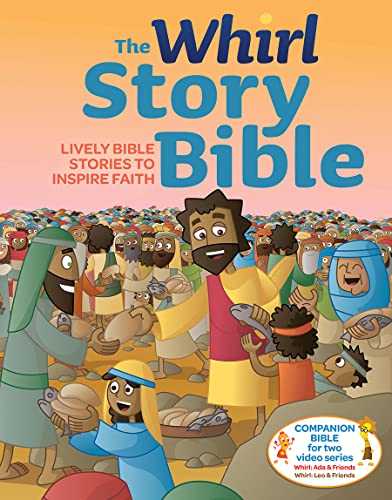
Publisher: Sparkhouse Family
Reading age: 4–8 years
The Whirl Story Bible features well-written and equitable retellings of 100 stories from the Bible. This Bible’s portrayal of women in the Bible, diverse artwork, and inclusive language make it a standout Bible for children. If you’re looking for a Bible that introduces powerful biblical women like Ruth and Naomi, Deborah, and Esther to young readers, this is a great choice.
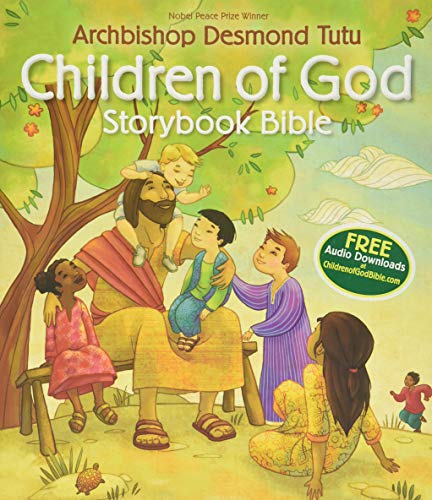
Publisher: Zondervan
Reading age: 4–8 years
Written by Bishop Desmond Tutu, this Bible retells 50 Bible stories for young readers from all nations. Written and illustrated as a Bible for the global church, it’s a great choice for bringing to life the Revelation 7:9 vision of God’s people from all nations. Each Bible story ends with a short prayer that can help to apply the message of the story to a child’s own life.
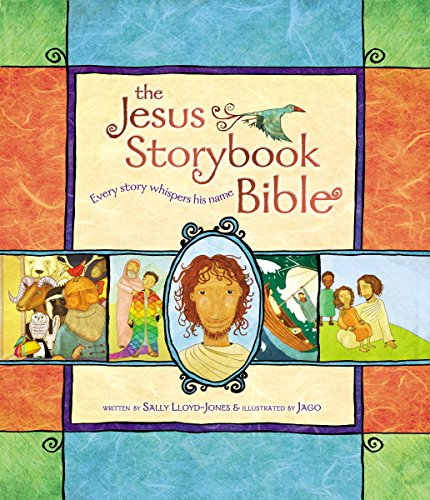
Publisher: ZonderKids
Reading age: 4–11 years
Strong and accessible writing, beautiful illustrations, and a holistic approach to storytelling that places Jesus at the center of the narrative make this children’s Bible a popular choice for introducing Scripture to children. One weak spot for this Bible, which does not quite meet our standards, is that it does not include as many stories focused on women from the Bible as it could. We recommend supplementing this Bible with other sources, such as the Whirl Story Bible, for better representation of women in the Bible.
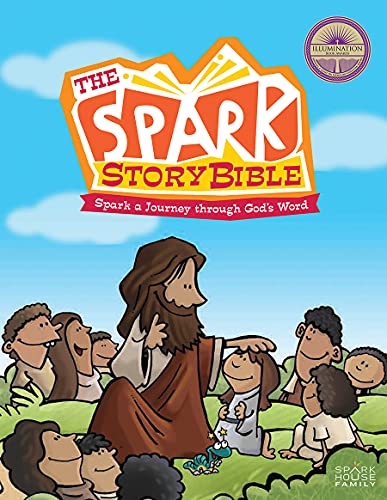
Publisher: Sparkhouse
Reading age: 2–8 years
This children’s Bible is a retelling based on the NRSV translation of the Bible, which most scholars consider to be the most accurate translation currently available. (The NRSV is also Faithward’s preferred Bible translation.) The Spark Story Bible features more than 150 Bible stories, creative language, and full-color illustrations. It also offers activity suggestions and questions to help children connect with the stories.
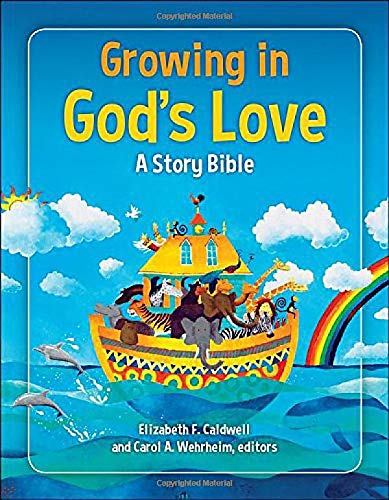
Publisher: Westminster John Knox Press
Reading age: 4–10 years
This devotionally rich story Bible retells 150 different Bible stories, arranging them by theme, and drawing on current biblical scholarship for theological and historical accuracy. This children’s Bible also applies learning theory to bring the Bible to life in ways that teach children meaningfully about their faith. Themes include “strong women and men,” “healing and miracles,” and “listening for God.” The artwork, done by multiple artists in different styles, includes people from a variety of ethnic backgrounds and also represents people who have disabilities.
Other helpful resources for teaching kids about the Bible and equity-based hospitality
How to Help Kids See Themselves and Others in the Bible: From the American Bible Society, here’s an excellent article with a list of bibles AND a checklist to help audit/vet books.
How to Teach Mutuality to the Next Generation: From Christians for Biblical Equality International, this is an insightful article about the importance of raising up girls and boys to understand their gifts and support each other as they live into them fully and freely.
Children’s Bible recommendations and additional contributions from: Terry DeYoung, Ruth Langkamp, Kara Lepley, Larissa Romero, Brenna Rubio, Willa Brown, Sarah Barton, Jane Schuyler, Lindsay Capel, Jessica Bratt, Bethany Popkes, Becky Jones, Jocelyn Van Heest, and Mark Stephenson.
Disclaimer: Some of the links in this article are affiliate links, meaning that, at no cost to you, we will earn a commission if you click through and make a purchase. However, we were not paid to review or recommend any of the links on this page.
Grace Ruiter co-founded Faithward and oversaw its growth from a small blog to a ministry that reaches 100,000-200,000+ people each month. She has been asking too many questions ever since she started talking, and she has no plans of stopping now. Although her curiosity has challenged her faith at times, it's also how her relationship with God has grown to where it is today. You can get in touch with Grace at graceruiterwrites@gmail.com.
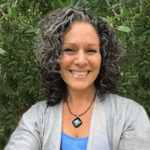
Rev. Liz Testa
Rev. Liz Testa is director of women’s transformation and leadership for the Reformed Church in America. She hosted four seasons of the Lavish Hope podcast. She is passionate about creating a sense of belonging and nurturing the gifts and leadership of others. You can connect with Liz by email at etesta@rca.org.

Rev. Annalise Radcliffe
Annalise Radcliffe is director of future church innovation for the Reformed Church in America. She is passionate about intergenerational ministry and believes that youth ministry is the work of the whole church, not just the youth pastor. She and her husband, Ron, are planting pastors of City Chapel in Grand Rapids, Michigan. You can connect with Anna by email at aradcliffe@rca.org.
